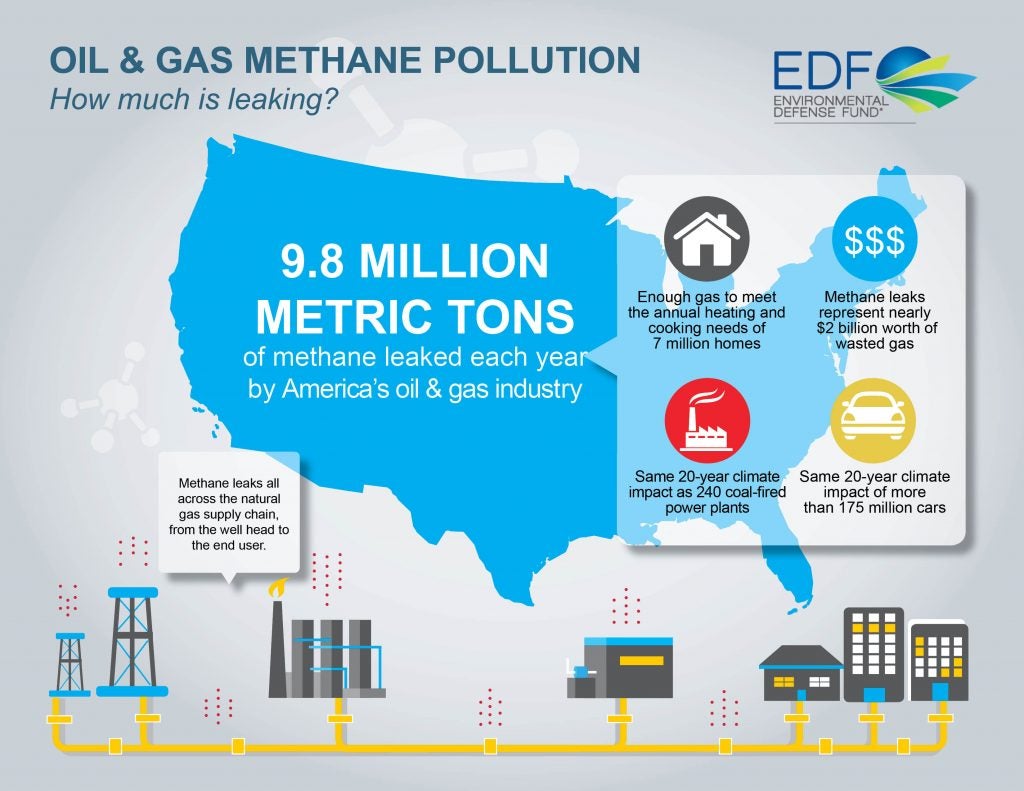This week sees the release of new figures from the U.S. Greenhouse Gas Emissions Reporting Program (GHGRP), which includes self-reported, large facility-level emissions data for 2015.
The good news is that methane pollution from the oil and gas industry is down slightly, thanks to a combination of stronger safeguards starting to take effect, along with a decline in new drilling projects due to an overall market cooling.
Operators report that methane pollution from onshore oil and gas production is down about 3.8% in 2015 from 2014. However, overall greenhouse gas emissions from all reporting segments in the oil and gas sector are only down 1.6%.
Sensible methane standards are starting to work
Some in industry will undoubtedly point to the new numbers as evidence that new emission rules are unnecessary. In fact, the figures show that sensible safeguards are responsible for much of the progress.
For example, the data from 2011-2015, oil and gas companies report a decline in methane emissions from well completions – an area the EPA began regulating in 2012. Since October of that year, operators have been required under an early phase of EPA’s New Source Performance Standards (NSPS) to either flare (burn off) or capture emissions with Reduced Emissions Completions (RECs), or use “green completion” methods that capture and route excess gas back into the system.
What we don’t learn from the Greehouse Gas Reporting Program numbers
It’s also important to note that many methane emissions are still unaccounted for in these new figures, which are self-reported by industry, and only include facilities emitting over 25,000 metric tons of CO2 equivalent per year. Only about half of U.S. oil and gas wells are required to report their emissions to the GHGRP. This is unlike the EPA’s Greenhouse Gas Inventory, which is an agency-prepared accounting of all man-made greenhouse gasses from across all sectors.
Greehouse Gas Reporting Program methods can also underestimate emissions since they often require use of emission factors rather than direct measurements.
For example, the Aliso Canyon storage facility in Southern California that sprung a massive, four-month leak last October reported annual emissions of only about 1,400 metric tons of methane, even though official estimates predict the actual amount of pollution during the leak was closer to 100,000 metric tons. This means that the monthly emissions rate during the leak was about 215 times higher than reported. Had Aliso Canyon been included in the GHGRP, it would show emissions were 7% more than reported.
We don’t know what other catastrophic super-emitter events have gone undetected and underreported.
Bottom line: Emissions are still too high
EPA’s much more comprehensive inventory finds that the oil and gas industry is emitting nearly 10 million tons of methane pollution a year — 34% higher than previously estimated. And a new study, out this week in Science, shows that methane emissions attributable to fossil fuels are at least 20-60% higher than reported.
So while we may be making progress addressing emissions, it’s clear methane continues to be a huge problem for our public health, economy, and climate.










